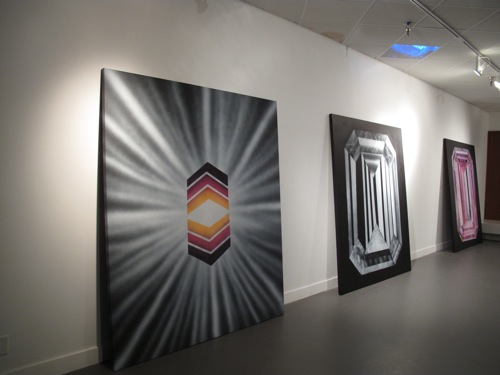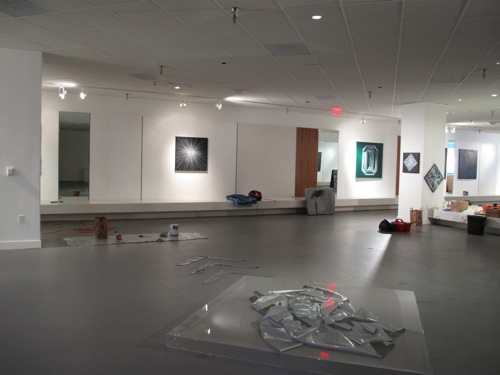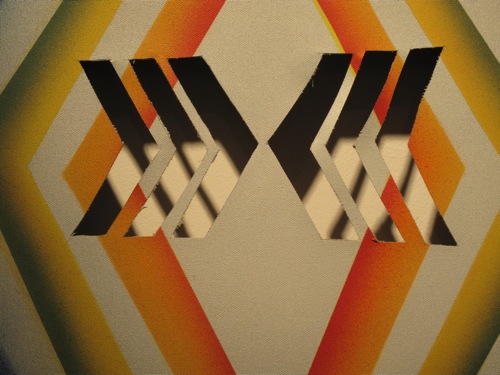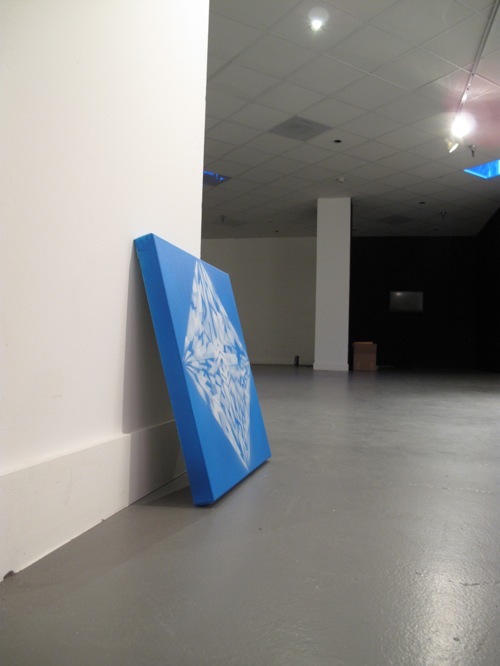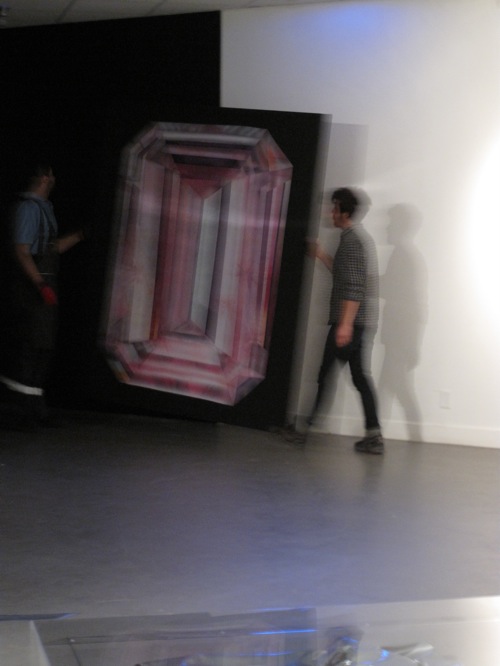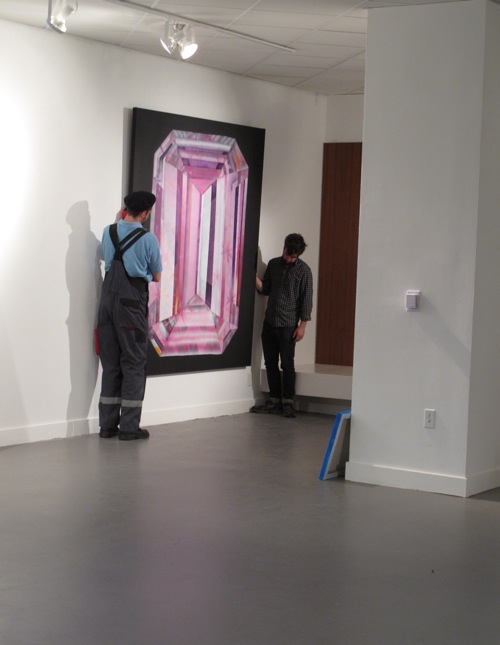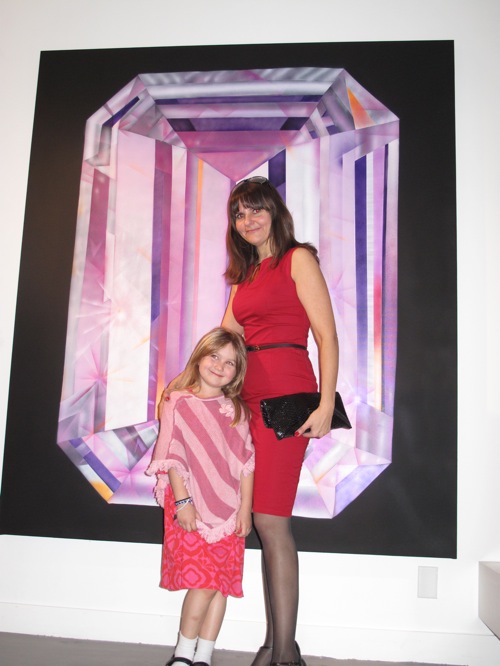This week, I decided to take the visit out of the studio and into the gallery. Given the title of this series, this is no ordinary gallery visit. I spent some time with artist Mary Anna Pomonis and her gallery representation, Anne Wharton as they installed Pomonis' first solo show in Los Angeles. Here is a peek into the messy madness (relatively speaking) that comes before the polished and pristine gallery opening. Pomonis' work is a recent discovery for me. I find her subject matter, style and technique very unusual and intriguing in that it occupies a space between the masculine and the feminine. Upon learning more about her work, I now understand that this is the very space she investigates in her new series In Brio.
Yasmine Mohseni: Tell me about your current exhibition.
Mary Anna Pomonis: The title of the exhibition is, In Brio. Con brio in Italian is a musical term that means with energy. In Spanish, brillo means shiny. Brio is the word I came up with. It's meant to imply that bright, shiny energetic space that seems to emerge from nothing. To be in brio implies bathing in that bright light as well as being secluded and embryonic.
For my first solo show in Los Angeles, I wanted to make images that represented the absence of masculine energy. The diamond is such an obvious token of male affection that has its own power in the ritual of marriage. However, I am divorced and when I started making these paintings I was in the middle of separating out my own sense of self. I thought of the emptiness I felt without my ring on my hand and at the same time a new power that came out of the absence of the ring. The black gesso, empty rooms, spaces, or cuts in my work pay attention to that palpable sense of self I found in the absence of masculine energy. I think of my energy as neither masculine nor feminine but as the energy of palpable void. Those two words "palpable" and "void" are antithetical but I am using that term in the sense that, together they articulate a space. It's the space in between the two that I identify with; the one I think of as in brio.
Describe your style
My style of painting with an air gun really began at Washington University in St. Louis. My studio was adjacent to the ROTC headquarters in the same spot once occupied by Judy Pfaff. I was very aware of the dynamic between all of the masculine energy flowing into the building through the door just beyond my own. I could hear the soldiers walking down the hallway on the other side of the door, their boots thumping against the floor. I wore combat boots too, and I felt this desire to be macho like them. I kept dyeing my hair and spray-painting my boots to match the color. I loved the spray paint. The airbrush came out of my fascination with spray-paint, it seemed so tough...like a fake metallic armor that enveloped a subject. One day, I picked up a hot rod magazine and it had an article about an airbrush artist painting flames on a car. I bought my first airbrush immediately after that.
Why did you become an artist?
My parents were both creative. My father owned a nightclub in my hometown of Champaign, Illinois and worked with a lot of musicians, an early business partner of his was music mogul Irving Azoff. I was always encouraged by my parents to be creative and expressive. My first experiences looking at artwork were looking at my parent's album covers. I think all artists are forced to live out their feelings publicly. They have to just put themselves out there and move on. That's why I love the musician Lupe Fiasco so much. His lyrics are working out what it means to be an artist struggling, loving, angry, evolving, nurturing and ultimately provoking.
Which single artwork in art history has inspired you the most?
Definitely the Krupp diamond! When I really started looking at diamonds as art, I became fascinated by the cut patterns of famous gemologists like Tollowsky and Mouawad. Diamond cutting, as a process, is an imperfect thing. It's about taking something raw and refining it by hand; diamonds aren't perfect. Recently I was standing in line next to a beautiful young girl at the Elizabeth Taylor Diamond Auction Preview hosted by Christie's. The girl kept complaining about the Krupp diamond, saying it wasn't that big and it had a visible flaw. I turned to her and explained that the flaw was the point, the diamond wasn't perfect as an object but as a symbol. When I look into its perfect, rectilinear Assher facet steps, it invokes so many things, the iron cross, a room, and of course the energy of Elizabeth.
Which artists (living or dead) do you find most inspiring?
I love Judy Chicago and Billy Al Bengston. They are really the two artists whose work with industrial air tools I have found the most aesthetically inspiring. At some point while airbrushing, I began cutting with a knife in order to make marks with the gun. I have always loved Fontana, so I began thinking about him as well. When I began to incorporate elements of Fontana's Concetto Spaziale (spatial concept) into my work, I found myself literally and figuratively going beyond the surface of the painting into another realm altogether. I think Billy and Judy inspired me to improve the paint technology in my studio and Fontana inspired me to improve conceptually.
The artist and her daughter
Next week: dispatch from Art Basel Miami Beach. Stay tuned!
